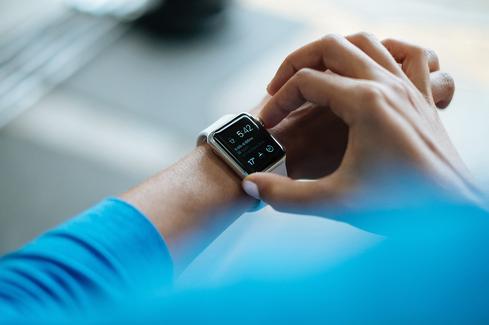Smartwatch Shipments Take Nosedive In Q3 2016Smartwatch Shipments Take Nosedive In Q3 2016
Despite the launch of a new Apple Watch line, smartwatch shipments plunged more than 50% between the third quarter of 2015 and the third quarter of this year. The latest numbers from IDC appears to show a market in need of significant recalibration.


Wearables At Work: 9 Security Steps Worth Taking
Wearables At Work: 9 Security Steps Worth Taking (Click image for larger view and slideshow.)
The smartwatch market may be due for a significant recalibration as shipments of these devices have plummeted. Between the third quarter of 2015 and the third quarter of this year shipments fell over 50%, despite an Apple Watch refresh at the end of September, according to new numbers from IDC.
In the third quarter of 2016, smartwatch shipments totaled 2.7 million units, a 51.6% year-over-year decline. In the third quarter of 2015, shipments totaled 5.6 million units. The market appeared in an upswing, with the original Apple Watch getting a full retail launch.
However, despite the lack of a significant refresh for most of 2016, the Apple Watch proved the most popular of smartwatches as the company shipped 1.1 million during the quarter. However, it's a far cry from the 3.9 million devices Apple shipped in the third quarter of 2015.
On Sept. 7, Apple announced its iPhone 7 and iPhone 7 Plus, along with the new Apple Watch Series 2, which went on sale later that month. Due to the timing, the IDC report was not able to include any of the new Watch numbers in its report, and the late-year refresh appears to have had a widespread effect throughout the entire market.
"The sharp decline in smartwatch shipment volumes reflects the way platforms and vendors are realigning," Ramon Llamas, research manager for IDC's Wearables team, wrote in the Oct. 24 report. "Apple revealed a new look and feel to watchOS that did not arrive until the launch of the second generation watch at the end of September."
Besides the Apple Watch refresh delays, Google's decision to hold off on its Android Wear 2 update, and the fact that Samsung announced, but did not release, its Gear S3 smartwatch, have also caused a significant slowdown in the market.
In addition, that market is in search of a purpose. The IDC report found that many of the top vendors have started to focus specifically on health and personal fitness to give customers a purpose to invest in these devices.
"Having a clear purpose and use case is paramount, hence many vendors are focusing on fitness due to its simplicity," Jitesh Ubrani, senior research analyst for IDC Mobile Device Trackers, wrote in the report.
"However, moving forward, differentiating the experience of a smartwatch from the smartphone will be key, and we're starting to see early signs of this as cellular integration is rising and as the commercial audience begins to pilot these devices."
In addition to Apple, Garmin, Samsung, Lenovo (through its Motorola division), and Pebble rounded out the Top 5.
[Read more about the mobile market in 2016.]
Of the top vendors, Garmin had the best showing, with 600,000 units shipped, a 324% increase from the same period last year. Much of that has to do with the company's ConnectIQ-enabled smartwatches that have emphasized healthcare and fitness, in addition to its Fenix Chronos.
Samsung finished third with 400,000 smartwatches shipped during the quarter, a 9% increase year-over-year. Part of the company's success has been its Gear S2 device, which offers cellular connectivity. But IDC finds that the line is getting old, and is in need of a refresh from the Gear S3 -- which has yet to be released to market.
Lenovo and Pebble each shipped about 100,000 smartwatches during the quarter. Lenovo watched its shipments fall about 73% year-over-year, while Pebble saw its shipments drop by about 54% between the third quarter of 2015 and the third quarter of this year.
About the Author
You May Also Like






